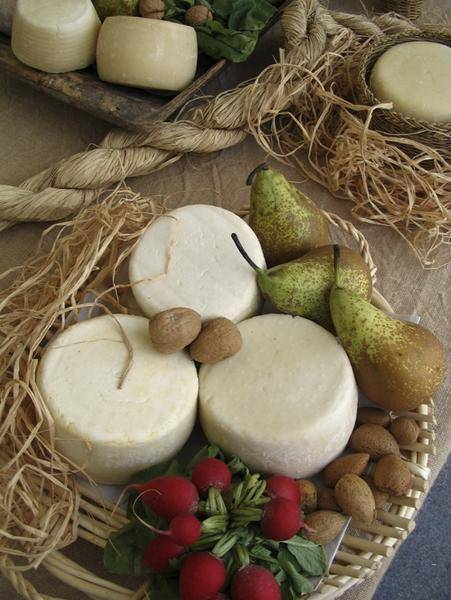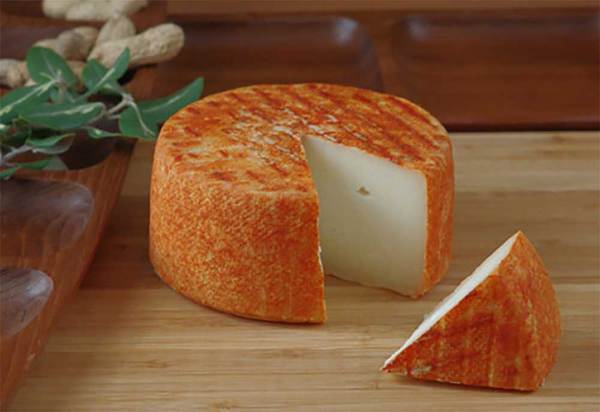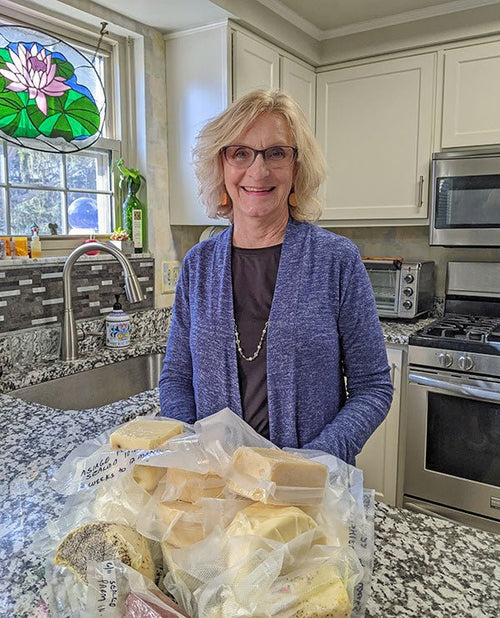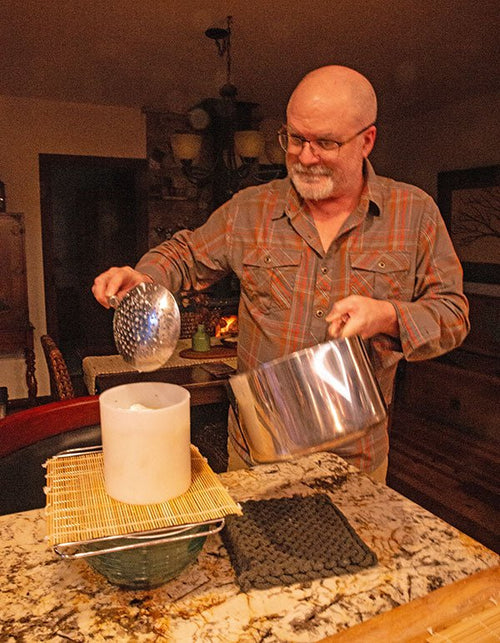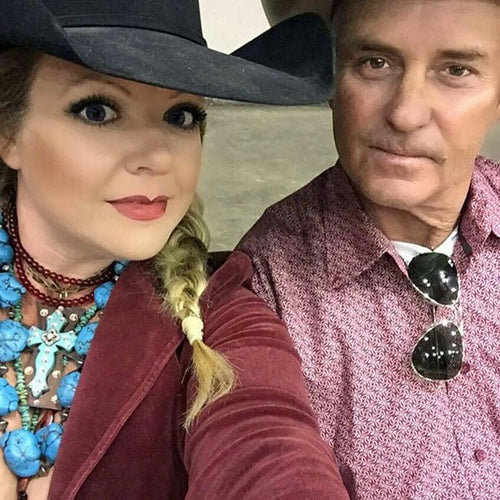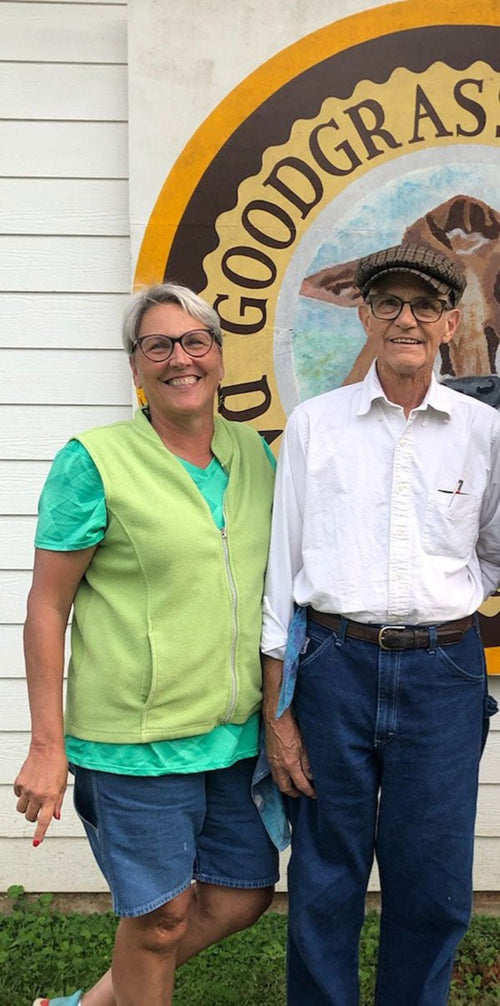Cheese Making Recipe of the Month
Yorkshire Cheese
This cheese was first made in the 12th century, but now there is only one company in Wensleydale, England still selling the Yorkshire version- The Wensleydale Creamery.
According to their website, the limestone pastures of the Yorkshire Dales with their own special blend of grasses, herbs and wild flowers give this cheese it's unique flavor.
Of course, we know most of you don't have milk from the hills of northern England! But Jim doesn't let that deter him. He has created a special recipe for you from a combination of 7 different recipes, ranging from the 1700's to the present.
Jim's version is simple, but loaded with all the information you need to produce this magnificent cheese. (There are good reasons why it's Wallace & Grommet's favorite!).
Cheese Making Questions & Answers
Re-Culturing Yogurt
Q. I read somewhere that we can keep the Y1 Bulgarian Yogurt going 8-10 times before we need a new culture. Why can't I keep it going forever (without using a new packet) if I re-make it every week?
A. In an ideal world, there would be countless generations for this. But ... most folks do not live in a laboratory and yogurt making is a part of their kitchen life. Therefore, sometimes the cultures are not maintained at ideal conditions. Too cold storage, too long between batches, developing excess acid, etc. all lead to shorter life spans and viability for these cultures. Because of this, the culture balance changes and the viability decreases, causing the yogurt to not be as good as the first few batches.
8-10 times is a conservative estimate, looking at customer reports. Some folks continue this with good results for a year and more before starting with fresh.
Wrapping Fresh Cheese
Q. I have been using clear wrap to wrap my fresh chevre, but I am afraid it may be keeping too much moisture in, as a small amount of whey/water is inside the wrap when I unwrap it. I think this will cause the cheese to spoil more quickly…although so far this has not been a problem as it gets consumed so quickly. Should I be using the paper wrap instead? and when should I be wrapping the cheese - at room temperature or after it has been refrigerated?
A. Two-ply paper is a better choice for this wrap because the paper layer will buffer the moisture. Whenever a high moisture cheese is wrapped, it should be allowed to sit in a dry room for a couple of hours to dry off the surface moisture before wrapping. Doing this may help with the clear wrap you are using as well.
Mold in the Aging Room
Q. We are a new, small cheese facility in Indiana. We built our aging room and put in a temperature and humidity controlled system. We are doing our aging on oak boards that we had specially made for this.
We are fighting mold like crazy. Do you have any suggestions for how to prevent the mold? We are using a mold inhibitor and flipping and wiping the cheeses regularly. We are trying to come up with some other things that we need to do and would appreciate any suggestions.
A. Mold can be an issue because it is everywhere in the air in the form of spores. High moisture will increase your problems, as do high moisture cheeses in general. Daily turnings and wiping are usually needed. You might consider an air cleaner for the space and positive pressure with filtered air.
Oak boards would not be my first choice for cheese aging. They are very heavy and have open porous surfaces to harbor mold spores - quite hard to keep clean. They need to be removed and cleaned on a regular basis.
Brie vs Camembert Molds
Q. I am a novice cheese maker. I make my cheeses with milk from my own goats. I am wanting to branch out and make brie. What kind of molds (for shaping and holding curd) do I need? What is the difference between a brie mold and a camembert mold?
A. Brie and camembert are very similar processes, but the big difference is the size of the mold, with brie being larger and ripening quite differently due to its size. Also brie can have a few alternative processes that makes it quite different. (Search online for Brie de Meaux and Brie de Melun to see this.)
We usually suggest folks try the first time making a camembert because the handling of the larger cheeses is much more challenging.
We do supply the camembert molds and I have a detailed guideline in our recipe section for this Camembert. The true brie molds are quite hard to find.
The Importance of Salt
Q. I am contacting you concerning my cheddar cheese problem. It is currently in the aging process and will be at 8 weeks soon. I accidentally left out the salt and was wondering if that might be the cause of the problem I am having:
A few weeks ago, I noticed a dark circle-shaped shadow on my waxed cheese. I thought that it might have been a stain, so I didn't pay much attention to it. However, now I noticed that the circle has become more pronounced and I even discovered a few more.
The biggest stain is about a half of an inch. I also scraped some of the wax off to ensure it isn't just on the surface. I am wondering if that is dangerous and if I have to throw the whole cheese away now? In addition, I am breastfeeding and really don't want to take a risk with my 5 month old.
A. Leaving the salt out is not a good thing because it is essential to stop the bacteria from working.
The mold you see under the wax is due to insufficient wax temperature. If the wax is not hot enough at waxing, the mold present on the surface will grow under the wax.
In addition, the bacteria may have become active due to no salt and it may have begun working again. This often produces gas and a place for the mold to grow. I would not consider this a safe cheese, especially with your current role.
Have a cheese making question, we're here for you: info@cheesemaking.com
Meet a Fellow Cheese Maker
Kim Ellis
Stuart,Oklahoma
Kim Ellis has one milking cow named Miss Lilly and she yields 8 gallons of milk per day. That's a lot of milk!
Kim has enough for all her family's dairy products and she gives the rest away.
Kim's husband, Sherman gave her the Holstein for her birthday and Miss Lilly is truly "the gift that keeps on giving."
At one point, Kim had 56 cheeses in her aging "cave!"
News From Fellow Cheese Makers
Jasmine Scholz (11) - Wangaratta, Australia
My Cheesy Story
Cheese Yum Yum Yum.
My Dad makes things all homemade such as Breads and Jams- yum much???
So, my dad for many many years has been saying to me one day we will make cheese.I was stoked when recently he said "hey want to try to make cheese?"
First, we tried to make some ricotta. It tasted nice but now we know that it could have had lots more salt to make it like proper cheesy taste.
My dad went online to a website for cheese and we ordered a whole heap of cheese starters to put in the milk to set the curds from whey.
It has been for about 5 weeks so far and we are going to be able to crack it open on the 8th week and I think it will taste great, but we don't know.
So this is the method of making the cheese:
- First - We went to the shops and got 5 liters (1.3 gallons) of milk for the big job.
- Second - We got out a HUGE pot and cranked up the heat
- Third - Poured in the milk
- Fourth - Waited waited and yes you guessed waited
- Fifth - THEN it was starting to separate
- Sixth - Time to skim the curd into a compressed container
- Seventh - We used the left over whey for soup- YUMMY
- Eighth - We waxed the cheese- yummy
- Ninth - We wait wait wait and wait until finally time to eat nom nom nom.
That was my cheesy story including the farm house cheddar.
Ethan Rambacher (17) - Littleton, MA
Two of my favorite things are cooking and cheese. So, when my family attended a cheese making class at a nearby community center, I was intrigued.
At the workshop, a chef taught us how to turn curd made from water buffalo milk into delicious mozzarella cheese. My family and I were excited to learn more, and we ordered some pre-made curd, which we stretched into mozzarella.
Soon after, we organized a group to order the mozzarella-making kits from your company. Our first two batches turned out like ricotta - too wet and not cohesive enough to hold together.
But on our third batch, we made some delicious, stretchy, flavorful mozzarella! The whole process was so fun, simple, and quick that I kept making mozzarella often.
A while later, the local library was running a season of programs based on sustainability and local, homemade food, centered around books like Michael Pollan's well-known Omnivore's Dilemma. After a few suggestions I decided to volunteer and demonstrate home cheese making at my own program.
At the program, I talked briefly about how I had learned how to make mozzarella. I explained the process, and some of the science, and I demonstrated making mozzarella with the simple 30-minute recipe. The cheese turned out great, and the program was a success. I enjoyed adding another item to the list of foods we can make at home, with local ingredients, from local suppliers. The sustainability of local and home cheese making is something that certainly contributes to its importance.
One of my favorite things about introducing people to making cheese - which I do often - is demonstrating that even something as "complicated" as cheese can be made at home, often quickly and easily. Many people seem to think cheese making is a specialized art and science which only professionals can do. To these people, it is as if cheese is made by some magical process, unbeknownst to them. And as long as people are allowed to believe this, cheese making will be something only professionals can do.
But by teaching the art and skill of cheese making to everyone we can, people will realize that cheese making can be simple, easy, and fun, and something that everyone can enjoy. So I hope that all cheese makers can spread and share this fantastic, fun skill and show other people how important this art really is, even to those who don't realize it.
A Cheesy Story
When I started over 3 years ago, we discussed that making cheese would be a great idea in the kitchen at The Fountains. Books were bought and sat collecting dust. Last month we decided to read them, get ingredients and pull the idea together.
Last August, the Dining Department and Activities Department put together a wine and cheese tasting for the residents, hoping the cheese comes out good. Devin, the Dining Room Supervisor, reached out to a number of Wineries in the area, asking them to donate.
He received 4 bottles of wine- 2 bottles from Carlson Vineyards and 2 bottles from Whitewater Hill Vineyards. It was a big hit!!
First month starting at The Fountains, I tried to make fresh bread. It came out so terrible that prep cook Barb and I played baseball with what had been produced! In the realm of the same context, the process of creating is truly a test of patience.
Most of the recipes call for the cheeses to sit anywhere from: 2 weeks, Queso Blanco and Mozzarella to 2 years, Sharp Cheddar and Parmigiano-Reggiano. The first ones we made; Colby and English Cheddar, sat for 1 month. The funny thing is we didn’t know how they were going to come out! We had never done this before. I tried a taste of both to make sure they were safe. They were!
It’s been trial and error. We are learning the truth behind the statement “The Art of Cheese.”
Christopher White
Kitchen Manager, The Fountains of Hilltop, Grand Junction, Colorado
Please send your cheese making news & photos to: moosletter@cheesemaking.com































